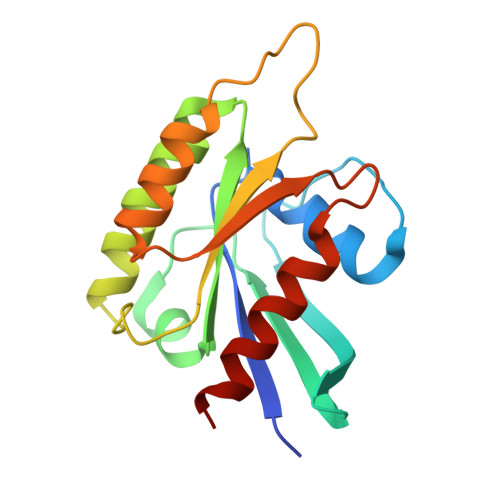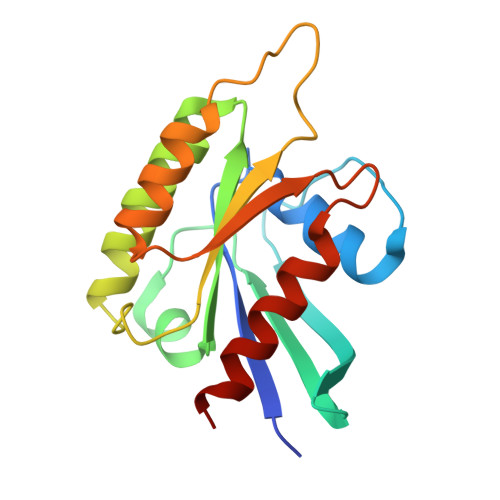Crystal structure of the GTP-binding protein-like domain of AGAP1.
Cheng, N., Zhang, H., Zhang, S., Ma, X., Meng, G.(2021) Acta Crystallogr F Struct Biol Commun 77: 105-112
- PubMed: 33830075
- DOI: https://doi.org/10.1107/S2053230X21003150
- Primary Citation of Related Structures:
7EB6 - PubMed Abstract:
AGAP1 is often considered to regulate membrane trafficking, protein transport and actin cytoskeleton dynamics. Recent studies have shown that aberrant expression of AGAP1 is associated with many diseases, including neurodevelopmental disorders and acute lymphoblastic leukemia. It has been proposed that the GTP-binding protein-like domain (GLD) is involved in the binding of cofactors and thus regulates the catalytic activity of AGAP1. To obtain a better understanding of the pathogenic mechanism underpinning AGAP1-related diseases, it is essential to obtain structural information. Here, the GLD (residues 70-235) of AGAP1 was overexpressed in Escherichia coli BL21 (DE3) cells. Affinity and gel-filtration chromatography were used to obtain AGAP1 GLD with high purity for crystallization. Using the hanging-drop vapor-diffusion method with the protein at a final concentration of 20 mg ml -1 , AGAP1 GLD protein crystals of suitable size were obtained. The crystals were found to diffract to 3.0 Å resolution and belonged to space group I4, with unit-cell parameters a = 100.39, b = 100.39, c = 48.08 Å. The structure of AGAP1 GLD exhibits the highly conserved functional G1-G5 loops and is generally similar to other characterized ADP-ribosylation factor (Arf) GTPase-activating proteins (GAPs), implying an analogous function to Arf GAPs. Additionally, this study indicates that AGAP1 could be classified as a type of NTPase, the activity of which might be regulated by protein partners or by its other domains. Taken together, these results provide insight into the regulatory mechanisms of AGAP1 in cell signaling.
Organizational Affiliation:
Shanghai Institute of Hematology, State Key Laboratory of Medical Genomics, National Research Center for Translational Medicine, Rui-Jin Hospital, Shanghai JiaoTong University School of Medicine and School of Life Sciences and Biotechnology, Shanghai, Shanghai JiaoTong University, 197 Ruijin Er Road, Shanghai 200025, People's Republic of China.
















